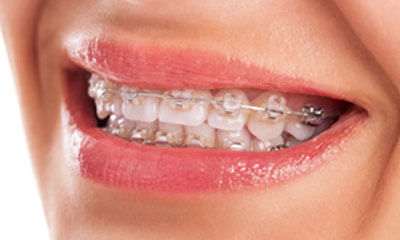Get the App
For Doctors
Login/Sign-up
Last Updated: Dec 10, 2019
BookMark
Report
Whitening / Bleaching
Everybody loves a bright white smile, and there are a variety of products and procedures available to help you improve the look of yours.
Many people are satisfied with the sparkle they get from daily brushing and regular cleanings at your dentist’s clinic, but if you decide you would like to go beyond this to make your smile look brighter, you should investigate all of your whitening options.
Start by speaking with your dentist. He or she can tell you whether whitening procedures would be effective for you. Whiteners may not correct all types of discoloration. For example, yellow-ish hued teeth will probably bleach well, brownish-colored teeth may bleach less well, and grayish-hued teeth may not bleach well at all. If you have had bonding or tooth-colored fillings placed in your front teeth the whitener will not affect the color of these materials, and they will stand out in your newly whitened smile. You may want to investigate other options, like porcelain veneers or dental bonding.
If you are a candidate for whitening there are several ways to whiten your smile:
• In-office bleaching. This procedure is called chairside bleaching and usually requires only one office visit. The dentist will apply either a protective gel to your gums or a rubber shield to protect the oral soft tissues. A bleaching agent is then applied to the teeth, and a special light may be used. Lasers have been used during tooth whitening procedures to enhance the action of the whitening agent.
• At-home bleaching. Peroxide-containing whiteners actually bleach the tooth enamel. They typically come in a gel and are placed in a specially made bleaching trays. Usage regimens vary. There are potential side effects, such as increased sensitivity or gum irritation. Speak with your dentist if you have any concerns.
• Whitening toothpastes. All toothpastes help remove surface stain through the action of mild abrasives. "Whitening" toothpastes have special chemical or polishing agents that provide additional stain removal effectiveness. Unlike bleaches, these products do not change the color of teeth because they can only remove stains on the surface.
Many people are satisfied with the sparkle they get from daily brushing and regular cleanings at your dentist’s clinic, but if you decide you would like to go beyond this to make your smile look brighter, you should investigate all of your whitening options.
Start by speaking with your dentist. He or she can tell you whether whitening procedures would be effective for you. Whiteners may not correct all types of discoloration. For example, yellow-ish hued teeth will probably bleach well, brownish-colored teeth may bleach less well, and grayish-hued teeth may not bleach well at all. If you have had bonding or tooth-colored fillings placed in your front teeth the whitener will not affect the color of these materials, and they will stand out in your newly whitened smile. You may want to investigate other options, like porcelain veneers or dental bonding.
If you are a candidate for whitening there are several ways to whiten your smile:
• In-office bleaching. This procedure is called chairside bleaching and usually requires only one office visit. The dentist will apply either a protective gel to your gums or a rubber shield to protect the oral soft tissues. A bleaching agent is then applied to the teeth, and a special light may be used. Lasers have been used during tooth whitening procedures to enhance the action of the whitening agent.
• At-home bleaching. Peroxide-containing whiteners actually bleach the tooth enamel. They typically come in a gel and are placed in a specially made bleaching trays. Usage regimens vary. There are potential side effects, such as increased sensitivity or gum irritation. Speak with your dentist if you have any concerns.
• Whitening toothpastes. All toothpastes help remove surface stain through the action of mild abrasives. "Whitening" toothpastes have special chemical or polishing agents that provide additional stain removal effectiveness. Unlike bleaches, these products do not change the color of teeth because they can only remove stains on the surface.



+1.svg)
